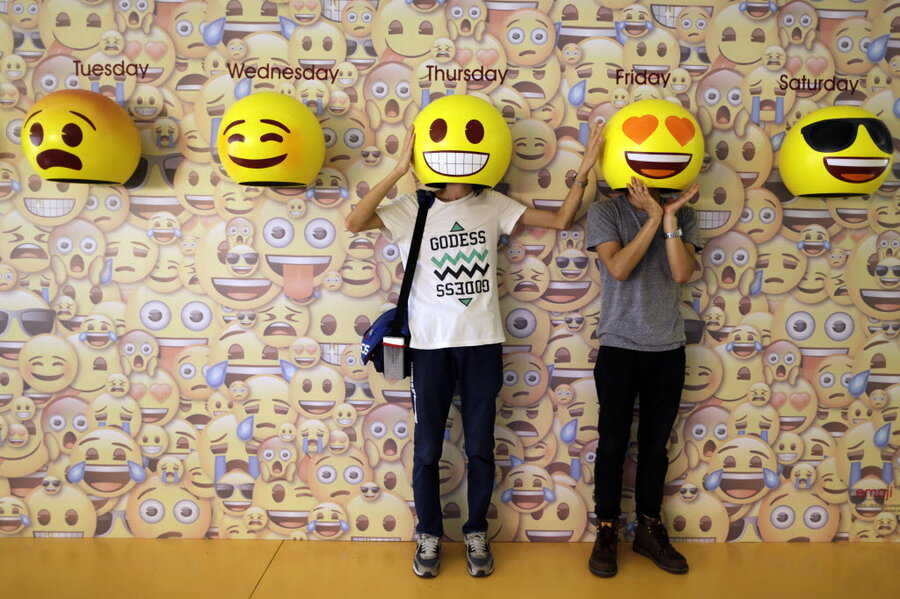Emojis show more than feelings: how the icons reflect social issues, too
Loading...
Earlier this week, Apple announced that more than 100 new emojis will be added as part of the iOS 10 update this fall, and the examples they gave show that the company isn’t just aiming for cuteness.
"This exciting update brings more gender options to existing characters, including new female athletes and professionals, [and] adds beautiful redesigns of popular emoji, a new rainbow flag, and more family options," Apple said in a post.
Twenty-first century typers and texters have a complicated relationship with emojis: on the one hand, they have been blamed for stunting our ability to communicate, lacing even meaningful interactions with sarcasm. Yet the Oxford English Dictionary has tried to classify emojis as words, a proposal some linguists quickly shut down.
Emojis, the evolved version of the emoticon, may have started out as playful. Over the years of their young life, however, they have also become a reflection of cultural change and way for the tech world to take a stance on social justice issues.
"We have officially entered the era of wokemoji – a safe way for Silicon Valley's biggest players to demonstrate their progressiveness via adorable illustrations without explicitly saying or doing anything else," writes The Ringer's Alyssa Bereznak.
The last major emoji update included five new skin shades, in addition to the classic smiley face yellow, after Apple received criticism for the fact that all the people represented in the emoji alphabet were white, amid the Black Lives Matter movement's push to bring racism in the US to the foreground of national debate. And as discussions around gun violence continue to escalate in the wake of a series of recent mass shootings, Apple has changed the gun emoji to a water pistol.
"A lot of the conversation in the media kind of feeds back into the committee," Jennifer 8. Lee, a nonvoting member of the Unicode Consortium emoji subcommittee, told The Ringer.
Back in March, Always released a commercial showing pre-teen girls' reactions when they realized that the only emoji representing them were a bride, a Playboy bunny, a girl getting her haircut, and a surfer – nope, never mind, they realize: that's just a boy with long hair.
Apple has responded accordingly.Their next update will include women representing professions that are not stereotypically girly: a female detective, a construction worker, and several female athletes.
"We are told we are the new generation of American women; no longer a minority, we are, in fact, the majority of breadwinners in American homes. And yet the best we can get is the flamenco," Amy Butcher, an assistant professor of English at Ohio Wesleyan University, wrote in an opinion column for The New York Times. Dr. Butcher described her search for an emoji that would appropriately celebrate her female friend receiving academic tenure – an accomplishment, she felt, that deserved to be represented by more than the sassy Spanish dancer emoji. "My friend had not danced her way to the provost's office, had not shimmied her tweed-blazered body into scholarly stardom," Butcher wrote.
Apple has received criticism over the emoji changes for myriad reasons: being too politically correct, not being politically correct soon enough, and for not making real progress in the real world, offscreen. Overall, however, much of the sentiment is positive.
"Apple and Google in particular have realized that people really care about emoji and they maybe need to be on the front foot with the messaging around them," Jeremy Burge, the founder of Emojipedia, told The Ringer. "Companies are are saying, 'Hey, we believe in this. We're Google and we believe in rights for women, and women equality. So we want this.'"
Also coming to iOS this fall is a gay pride flag, which will join the more than 250 country flags already available, and 24 new iterations of the family emoji. The line-up will include single parent families and more same-sex parents.






